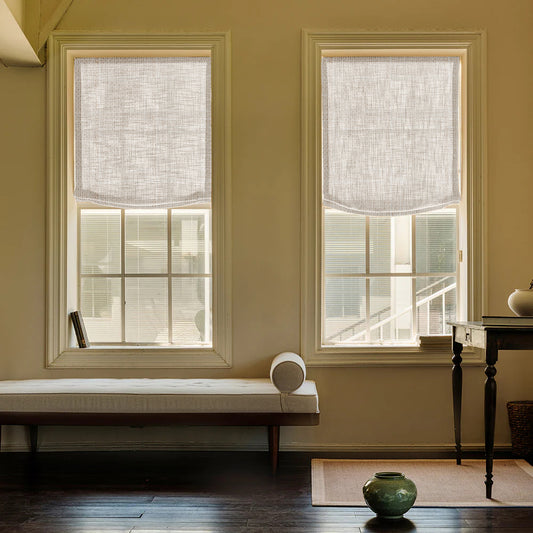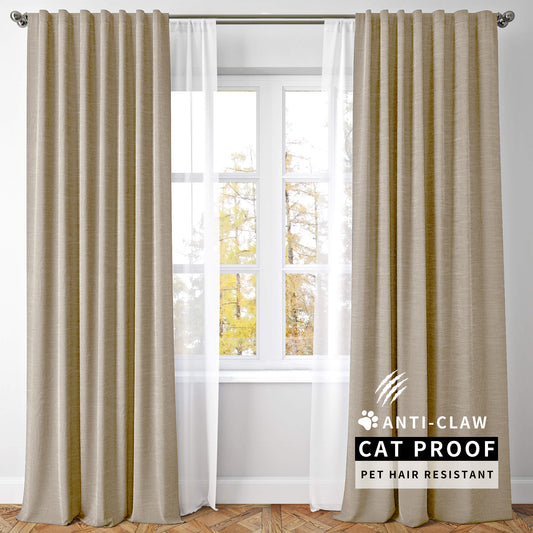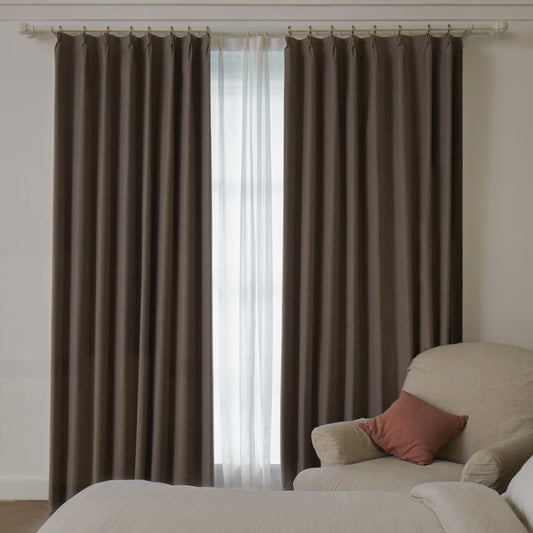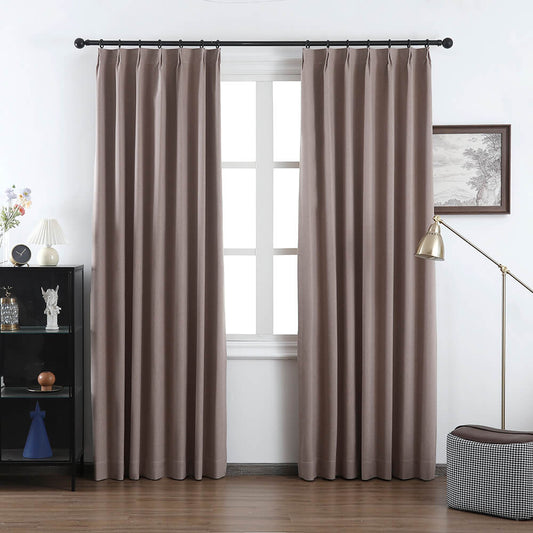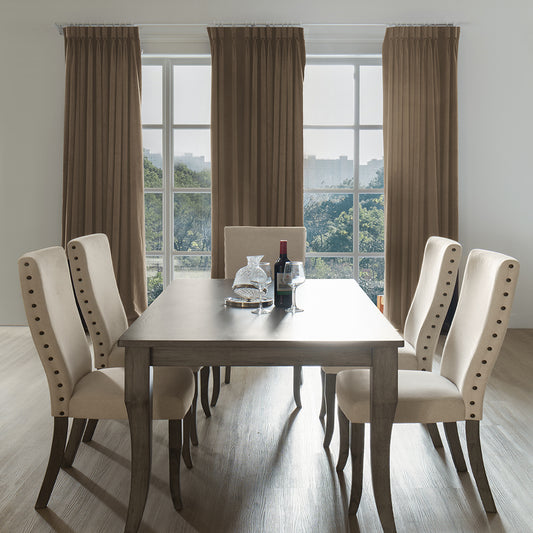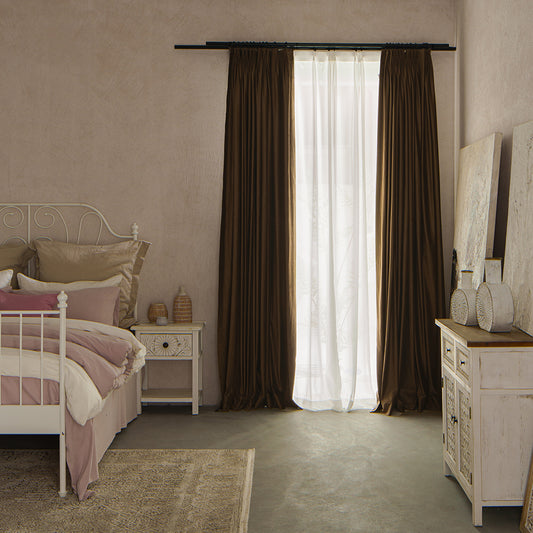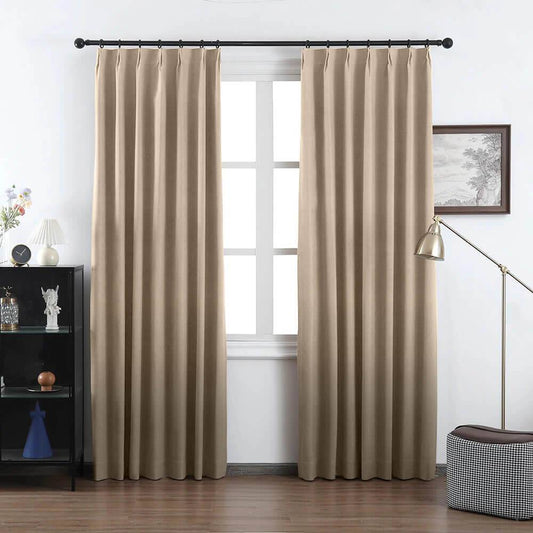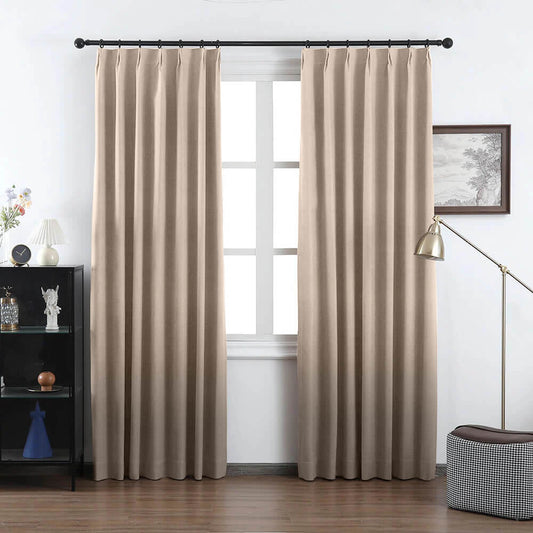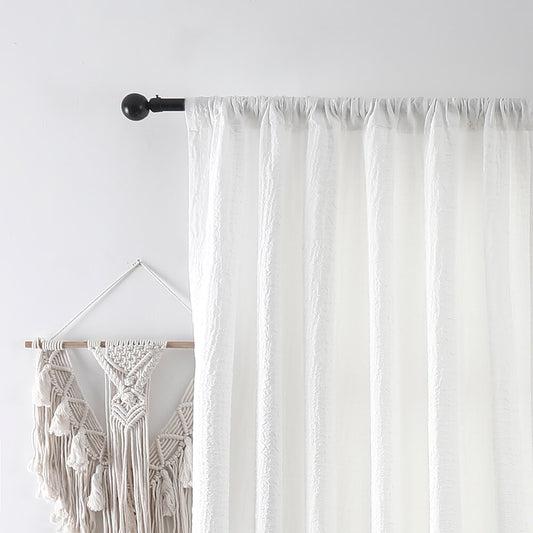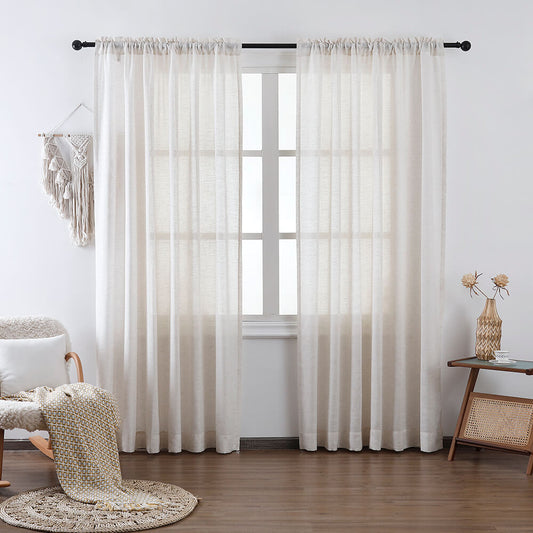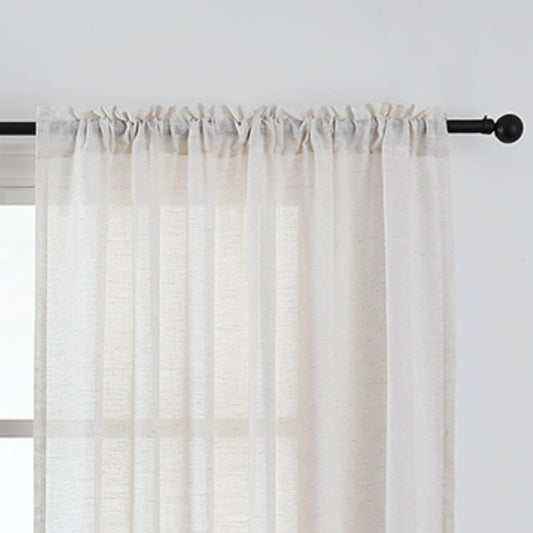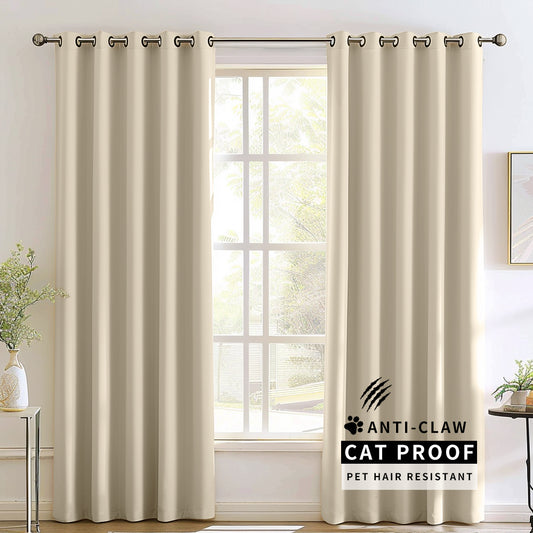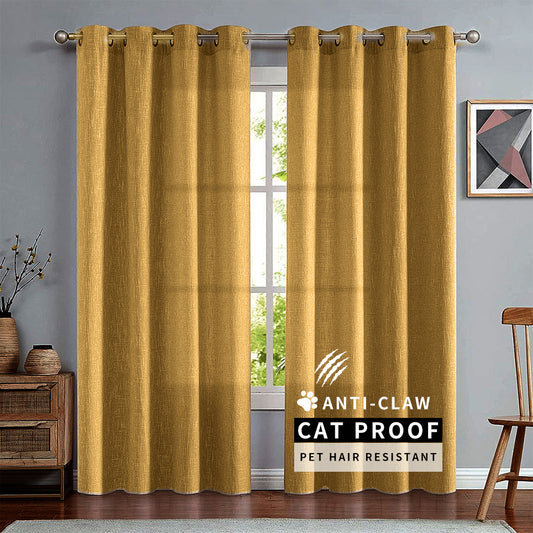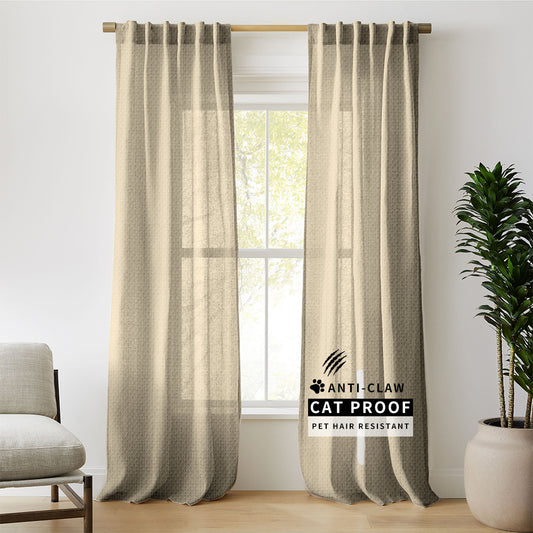How Many Curtain Panels Are Needed For Full Coverage?
Full curtain coverage typically requires 2–3 panels per window, with total width 2–3 times the window’s measurement. At VeilVeil, we recommend factoring in fabric density (sheer vs. blackout) and header style (grommet vs. pinch-pleat) for optimal fullness. For example, a 60" window needs 4–6 standard 24" panels. Always account for pattern repeats in decorative designs to avoid awkward seam alignment. Olivia Pet Friendly 100% Linen Curtains Drapes Soft Top
How does window width affect panel count?
Window width directly determines panel quantity via the "fullness ratio" (1.5x to 3x coverage). A 48" window using 24" panels needs 4–6 panels (2–3 per side). Heavy fabrics like VeilVeil’s textured jacquard require 2x fullness, while light linen drapes need 3x for lush folds.
Technically, the formula is: (Window Width × Fullness Factor) ÷ Panel Width. For a 72" window with 2.5x fullness using 30" panels: (72×2.5)/30=6 panels. But here’s the catch—double-layer treatments (sheers + blackouts) double this count. Picture a VeilVeil client with 8’ patio doors: 96” width ×2.5=240” fabric. Using 50” wide velvet panels, that’s 5 panels (round up for symmetry). Why does this matter? Undersized panel counts create a stretched, institutional look rather than luxury cascades.
| Window Type | Standard Width | Panels Needed (2x Fullness) |
|---|---|---|
| Small Bedroom | 36" | 3–4 (24" panels) |
| Living Room | 60" | 5–6 (30" panels) |
| Patio Door | 96" | 8 (50" panels) |
Do curtain styles change panel requirements?
Yes—grommet, rod-pocket, and pinch-pleat headers demand different densities. VeilVeil’s pinch-pleat silk drapes need 3x fullness for structured folds, while grommet panels (like their stainless-steel Aurora line) only need 1.8x. Rod-pocket styles fall in between at 2.2x for casual gather.
Let’s break it down. Pinch-pleat curtains require more fabric to create their signature tailored pleats—imagine needing extra material for a couture gown versus a simple T-shirt. A 100” wide window with triple-pleat headers would need 300” of fabric (3x), split across six 50” panels. Conversely, VeilVeil’s grommet-top curtains slide easily, so 180” total width (1.8x) suffices. Pro Tip: For layered looks (sheers under drapes), calculate each layer separately. What’s the risk of mismatch? Sparse panels won’t hold thermal insulation properly, undermining energy efficiency.
What role does fabric weight play in coverage?
Heavy fabrics (velvet, brocade) need fewer panels than light materials due to their structural hold. VeilVeil’s velvet panels achieve full drama at 2x coverage, while linen or voile requires 3x to avoid transparency gaps.
Consider density—a heavyweight 450GSM velvet drapes differently than 120GSM cotton. For a 50” window, velvet needs 100” total width (2 panels per side), whereas linen requires 150” (3 panels per side). One VeilVeil client tried stretching 4 linen panels across their 70” living room window; the result was sun-faded furniture from insufficient UV blockage. Pro Tip: Always pair sheer underlayers with room-darkening panels—calculate both sets. Rhetorical question: Why pay for thermal-lined drapes if gaps negate their insulation?
| Fabric Type | Ideal Fullness | 60" Window Panels |
|---|---|---|
| Velvet | 2x | 4 (30" each) |
| Linen | 3x | 6 (30" each) |
| Sheer | 3x | 6 (30" each) |
How do ceiling height and stacking affect panel count?
Tall windows need longer panels, which may require width adjustments. VeilVeil’s 108” extra-length drapes for 10’ ceilings use weighted hems—add 15% width to account for vertical stretching over time.
Best Curtain Styles for Office Spaces and Corporate Buildings Here’s the science: Gravity causes fabric to "grow" 1-3% annually. A 96” tall panel could stretch 2”, creating width reduction. For 20’ ceilings in atriums, VeilVeil engineers recommend 4–6 extra-wide panels with vertical seams reinforced. Example: A client’s 18’ tall living room needed 130” wide silk drapes—six 25” panels per side prevented midday glare. Warning: Never skimp on panel width for tall windows; “vertical stripes” of light peeking through defeat the purpose.
VeilVeil Expert Insight
FAQs
For 36–48” windows, yes—if using 24” wide panels at 2x fullness. VeilVeil’s twin-packs simplify this common setup.
Can I use odd numbers of panels?Yes—centered single panels over narrow windows work (e.g., 3x30” over 45” window). VeilVeil’s odd-number bundles accommodate asymmetrical designs.
How do patterned fabrics affect panel math?Align repeats across panels—add 1-2 extra panels to match motifs. Our design team includes repeat allowances in custom orders.




